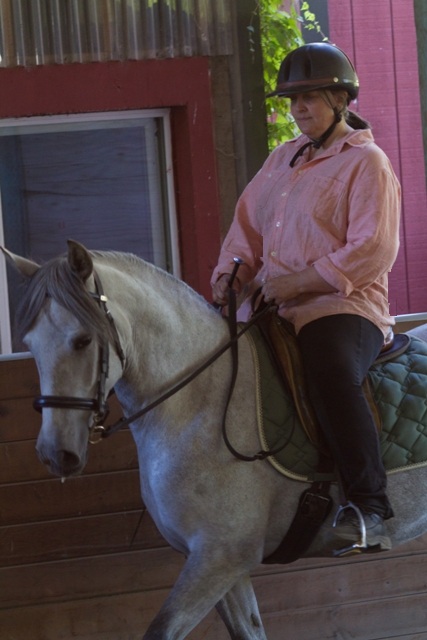Two components overlooked in the teaching of dressage and in the equestrian literature which produce distortions and dysfunctions in working with the horse or adversely affect rider-horse relationship is the understanding of image and texture of the aids.
The first, image, is defined as the memory of a perception that is modified by subsequent experience and that contains both intellectual and emotional elements elicited by intrapsychic and extrapsychic stimuli.
The second element, texture, is the visual or tactile surface characteristics and appearance of the connection with the horse through the aids. Texture in the aids is about the experience of the feeling which constitutes an acute awareness of where and how the tactile experience occurs and the orientation in space and time of those feelings.
The positive exploration of image and texture are the two factors which bring the quality of a rider’s dressage to higher and higher levels. They are also significant forces in effective teaching and learning in both the horse and the rider.
One of the things which makes much of the writing I do unusual is that I commonly express aspects of the emotional element of the experience of dressage. I generally reserve the most technical parts for when I am actually teaching a student with a horse, but here in my writing, I generally sidestep the technical details and only frame the spirit of the work, leaving the reader to find the technical aspect themselves.
Texture and image are the constituent parts of view which provides an important component to cultivating a deeper understanding of dressage. Most of the equestrian literature is rather flat in terms of texture and image and so book learning or for that matter the imposition of standards such as the FEI attempts in do for the competitive world, leaves the horse and human in a rather two-dimensional world rather than the glorious multidimensional world in which we and the horse actually live.
A proper view always contains both a masculine and feminine aspect and is a dynamic exchange of the energies at hand and just as a passing and yet important point, is that there is a geometry which is always present in the energy flows.
True view is always a multidimensional experience and conveying “view” is in the manner of looking at or regarding the dressage experience. Conception is the intellectual aspect, but in working with horses, grasp in very important. In the conventional sense, grasp is how we hold our dressage; the mental hold or comprehension especially when coupled with the tactile and emotional experience, gives a complete understanding and adds breadth to our experience of dressage. View, illumined by grasp, is the opening and closing of the mind and emotions (breath of being) to appreciate a fuller experience of being with the horse.
So in the work I do in dressage, I work wth the view, texture and image created by the experience of being with the horse. My riding arena is the laboratory in which I explore the texture and image of the experience. Shaped by a view which places the horse and human’s emotional and mental experience as significant factors in dressage, texture and image adds greater depth to the experience which seeks always a cadence and harmonious interplay with the horse.
There is so much and perhaps too much that is being pointed out here. The proper orientation of the mind to the experience of dressage, which at it best is the harmonization of two minds into one, seems to be a key which is missing or broken for so many students of this art. Good dressage, having lost itself in two dimensions seems to need both image and texture to find completion.
The dressage of today needs to open to kindness and recover its art and with it, find the heart of goodness in its practice for its own sake. Slow down and enjoy, it is not how fast you train but how fully you live the experience and how generously you share with the horse.


Recent Comments